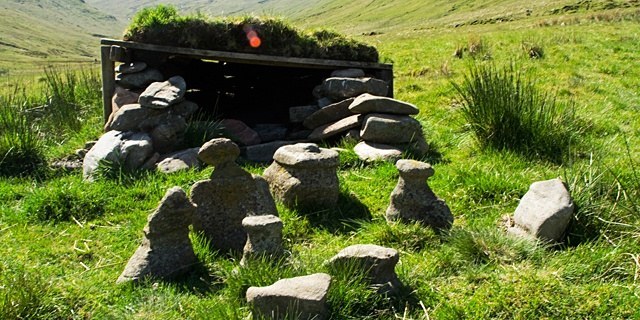A Highland Perthshire history society have grave reservations about plans lodged for hydro schemes due to the potential impact on “scenic beauty” and also to them being located near the site of one of the last pagan rituals in the UK.
Auch Estate’s Allt Cailliche project in Glenlyon is bitterly opposed by members of Glenlyon History Society, along with a large section of the community, with 60 letters of objection being submitted to Perth and Kinross Council.
Four hydro schemes are proposed for the Glenlyon area but the historical society is against the plan due to it being sited in a “wild and remote” area and also its proximity to the nearby rocks of Tigh Nam Bodach.
Tigh Nam Bodach has three rocks, which represent an old woman, Cailleach, an old man, Bodach, and their daughter, Nighean. These rocks are placed in a sheiling a stone-walled shelter during winter and then taken outside in spring.
Society secretary Jamie Grant said the schemes would be built in one of the “last areas of truly wild land.”
He told The Courier, “We support renewable energy and understand landowners need to make a living but we object to two of these four schemes.
“Tigh Nam Bodach is one of the last pre-Christian rituals in the UK. It’s an important site. The community has been moving these stones for hundreds of years.
“It also contains an unbroken link to the past and is a common part of our cultural heritage.”
Mr Grant said he believed there had been 60 letters of objection and this shows the strength of feeling in the rural area.
“The objectors represent the majority of people in the Breadalbane area,” he added. “That’s a fairly high number of people and is a significant amount given this is a scant area.
“I can’t speak for the community, I am speaking on behalf of the historical society but it shows the level of feeling here.
“The only person to benefit financially from the four hydro schemes is the landowner. It will also have an impact on tourism, which is important to Perthshire as this is an area of scenic beauty.”
The Courier contacted the Auch Estate for a comment but was unable to get a response.
Image used under Creative Commons licence from Richard Bisset.
